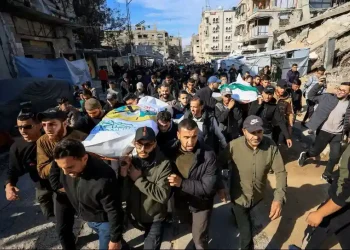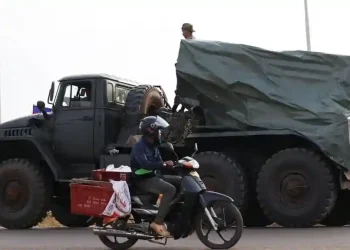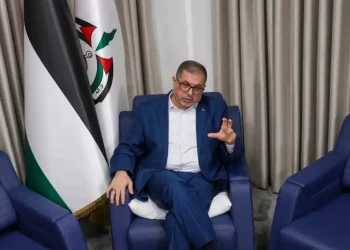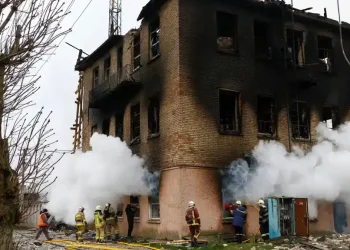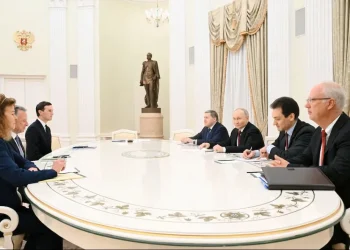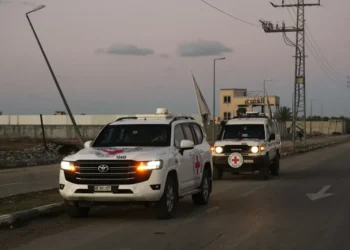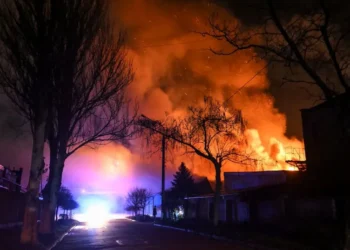Iran moves to rearm regional proxies amid stalled U.S. nuclear negotiations
July 23, 2025 – 4:30 PM
Iran is stepping up efforts to rearm its regional proxies just as potential nuclear negotiations with the U.S. show signs of fading. From Yemen to Lebanon, Tehran’s allies are growing more active again, despite recent blows to Iran’s military leadership and influence. The timing suggests Iran is preparing to bolster its regional position before reengaging in diplomacy.
What happened
Over the past few weeks, Iran has reenergized its support for proxy groups across the Middle East. These include the Houthis in Yemen, Hezbollah in Lebanon, Shiite militias in Iraq, and armed networks operating through Syria.
This uptick in activity comes after nearly two years of Israeli strikes that have significantly weakened Tehran’s regional reach. But according to analysts, Iran’s leadership wants to demonstrate that despite those losses, it remains capable of projecting power.
“They want to show they’re still intact, that nothing has changed,” said Michael Knights of The Washington Institute. “If you’re the Quds Force right now, that’s your message.”
Yemen: Largest weapons seizure in years
One of the most dramatic developments happened in the Red Sea.
Just three days after a ceasefire between Iran and Israel, a ship carrying 750 tons of Iranian weapons—including missiles, drone engines, and radar equipment—was intercepted. The U.S. Central Command confirmed that the shipment was bound for the Houthis.
This marked the largest weapons seizure in the history of Yemen’s National Resistance Forces, led by Tariq Saleh.
Iran’s foreign ministry denied the shipment, calling the report “a deceitful attempt” to mislead the public.
Still, Houthi attacks have clearly resumed. A Greek-owned commercial ship was struck, killing four and leaving eleven missing. Another ship, the MV Magic Seas, was targeted with drones and sank—signaling the Houthis’ renewed aggression in the vital shipping corridor.
Iraq: Drone attacks target energy infrastructure
In Iraq, suspected Iran-backed militias have ramped up attacks on oil facilities in the Kurdish region.
According to Kurdish Regional Government (KRG) officials, five oil fields—two operated by U.S. companies—were targeted in recent drone attacks.
“This is a calculated campaign to economically strangle us,” said KRG official Aziz Ahmad.
Peshawa Hawramani, a KRG spokesperson, said the goal of the attacks is to cripple the region’s ability to produce energy, thereby removing a key bargaining chip in internal Iraqi negotiations.
The KRG blames the Popular Mobilization Units, a Shiite paramilitary group backed by Iran, for the bomb-laden drone attacks near Erbil and other key sites.
Lebanon: Hezbollah weakened but still active
Iran’s top regional partner, Hezbollah, has taken major hits since Israel’s October 7 response to Hamas’s attack.
Its long-time leader, Hassan Nasrallah, was killed in an Israeli strike. Syrian President Bashar al-Assad, a key Hezbollah ally, was deposed in December—cutting off crucial supply lines.
Now, Hezbollah faces growing domestic and international calls to disarm.
“They’ve lost credibility even within their own base,” a regional official told CNN.
Still, Hezbollah remains a concern. Sources say the group may try to regroup in the coming weeks, fearing a larger Israeli offensive. With its position more fragile than ever, the group sees its current status as “existential,” according to sources familiar with Lebanese dynamics.
Syria: Smuggling routes disrupted
The new Syrian government has also taken a hard line against Iranian influence.
Several Iranian arms shipments headed for Hezbollah in Lebanon have been intercepted in the past year, according to Syrian officials.
One high-profile seizure included anti-tank Kornet missiles hidden inside a vegetable truck near Homs, just miles from the Lebanese border.
“We’re intercepting Iranian shipments quite often,” a senior Syrian official said. “They’re small, pieced together locally, and smuggled to Lebanon.”
He also noted that financial transfers from Iran to proxy networks are now being funneled through Iraq, further complicating oversight.
Why this matters now
Iran’s recent moves come as diplomatic momentum between Tehran and Washington stalls.
President Donald Trump, speaking Wednesday, showed little urgency to return to talks. “We’re in no rush… we bombed the hell out of their various places,” he said.
Iranian officials echoed that lack of enthusiasm. Senior adviser Ali Larijani said on Friday, “Right now is not the time for talks. Negotiations are a tactic… we wait and see if the Supreme Leader finds it useful.”
A sixth round of U.S.-Iran negotiations was set for June 15 but was canceled after a surprise Israeli airstrike.
Despite public posturing, analysts say Iran’s push to revive its proxy network may be part of a bigger strategy—to gain leverage before returning to the table.
“They want to appear defiant,” Knights said. “Not so defiant that the U.S. hits them again, but enough to look like they’re still in control.”
Final thoughts
Iran’s rearming of its proxy allies signals a clear attempt to regain regional clout, even after suffering major military and political setbacks.
From shipping weapons to the Houthis, to suspected drone strikes in Iraq, and intercepted missile shipments in Syria, the message from Tehran is unmistakable: its influence may be bruised—but it isn’t broken.
Whether this posturing leads to a new round of U.S.-Iran talks remains uncertain. But as the region braces for potential escalation, all eyes are once again on Iran’s next move.
Stay tuned for more updates on Middle East conflicts, nuclear negotiations, and international diplomacy. Share your thoughts in the comments or follow for more in-depth coverage.
This article was rewritten by JournosNews.com based on verified reporting from trusted sources. The content has been independently reviewed, fact-checked, and edited for accuracy, neutrality, tone, and global readability in accordance with Google News and AdSense standards.
All opinions, quotes, or statements from contributors, experts, or sourced organizations do not necessarily reflect the views of JournosNews.com. JournosNews.com maintains full editorial independence from any external funders, sponsors, or organizations.
Stay informed with JournosNews.com — your trusted source for verified global reporting and in-depth analysis. Follow us on Google News, BlueSky, and X for real-time updates.


